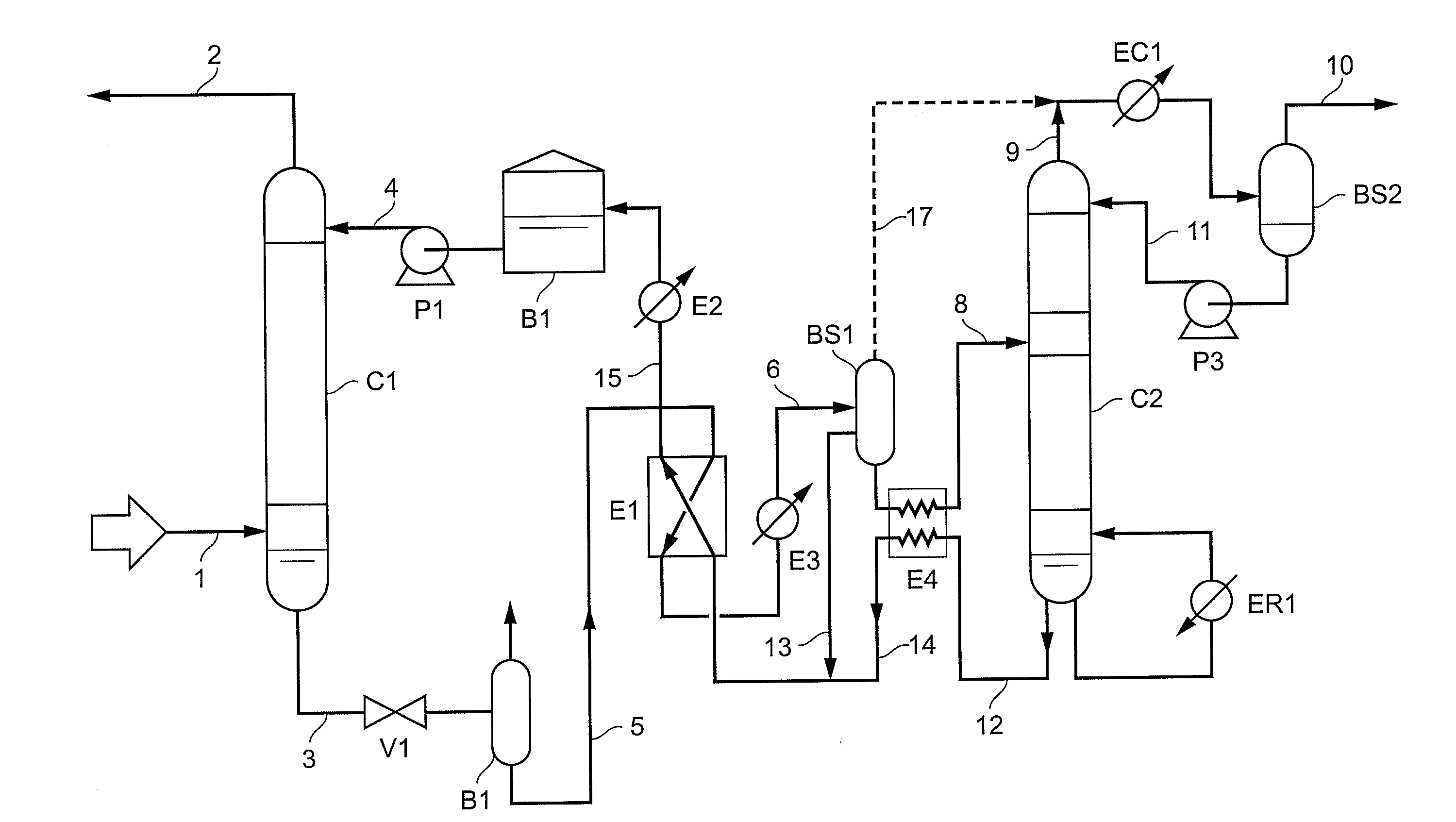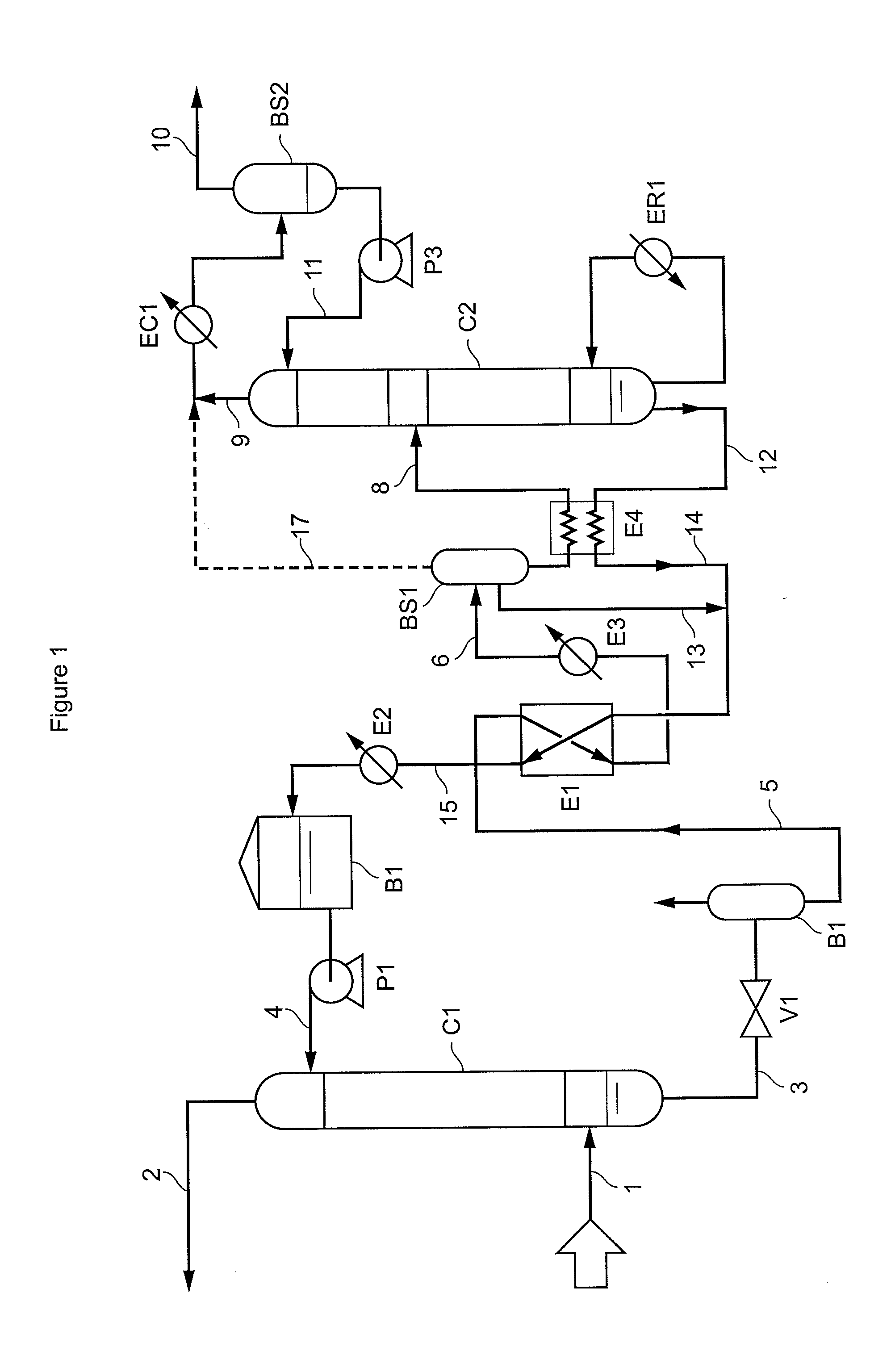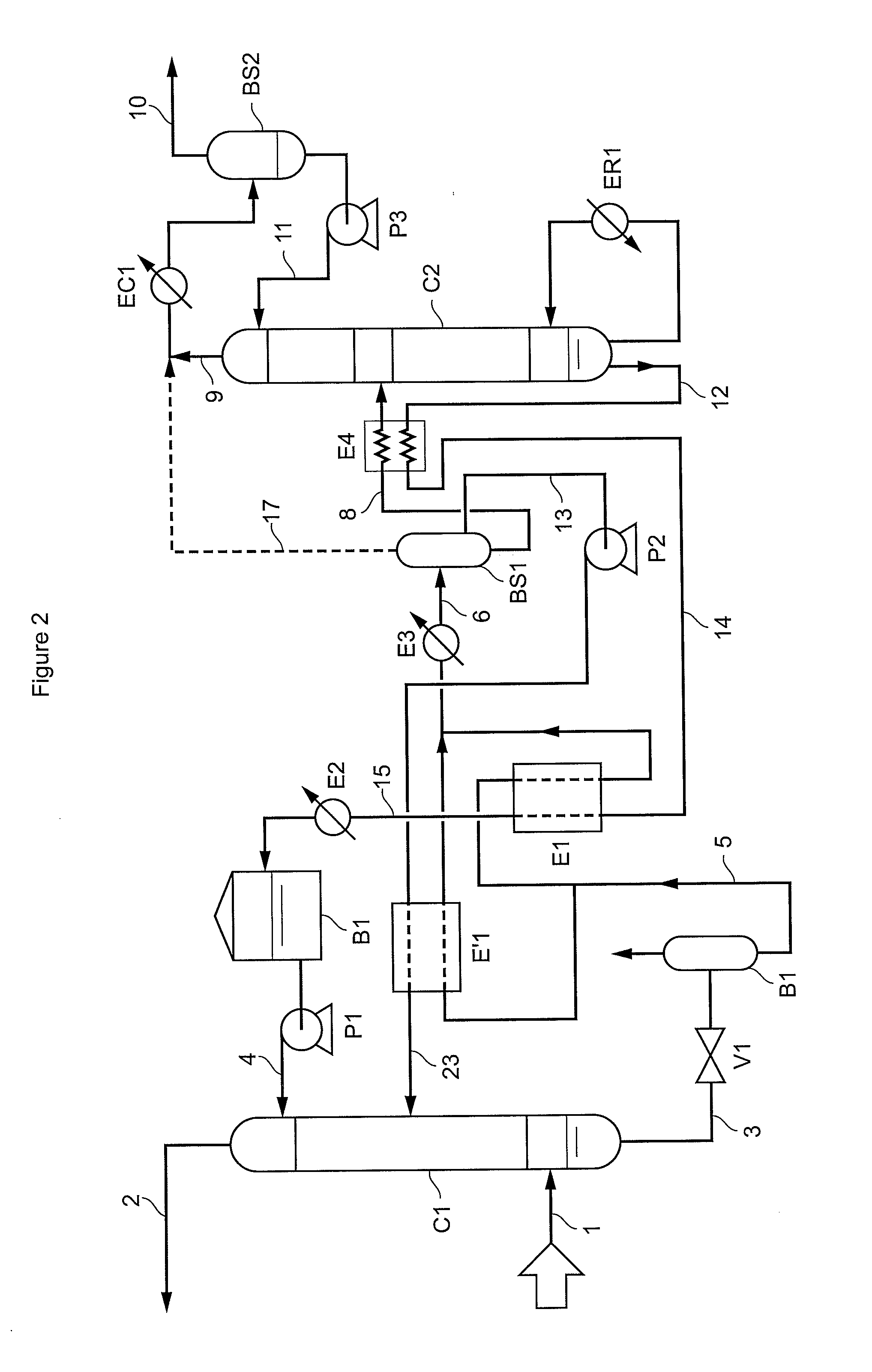Method of deacidizing a gas by means of an absorbent solution with fractionated regeneration through heating
- Summary
- Abstract
- Description
- Claims
- Application Information
AI Technical Summary
Benefits of technology
Problems solved by technology
Method used
Image
Examples
numerical example 1
[0071]We consider a water-N-propyl-1-propanamine solution at 20° C. whose composition is as follows, in molar fraction:
[0072]water: 0.6
[0073]N-propyl-1-propanamine: 0.4.
[0074]At a temperature of 80° C., two phases are formed, a nearly pure aqueous phase and an organic phase enriched in N-propyl-1-propanamine whose composition is as follows:
[0075]water: 0.24
[0076]N-propyl-1-propanamine: 0.76.
numerical example 2
[0077]A solvent made up of 75% by weight of N,N,N′,N′-tetramethyl-1,3-butanediamine and of 25% by weight of water is contacted at 25° C. and at atmospheric pressure in a gas-liquid contactor with a N2—CO2 gaseous mixture containing 10% by volume of CO2 until equilibrium is reached. After heating to 60° C., the solvent demixes so as to form two liquid phases. The absorbed CO2 concentrates in the denser phase. This phase represents 10% of the total weight of the solvent.
[0078]Implementation of the method according to the invention is particularly interesting in the case of a low proportion of acid compounds in the absorbent solution. This is for example the case when a gas with a reduced H2S content, 100 ppm for example, is to be treated so as to lower this content down to 3 ppm for example. In this case, the fraction consisting of the water contained in the initial absorbent solution is essentially sent to the regeneration column. This allows to have to regenerate only a relatively s...
PUM
| Property | Measurement | Unit |
|---|---|---|
| Temperature | aaaaa | aaaaa |
| Temperature | aaaaa | aaaaa |
| Fraction | aaaaa | aaaaa |
Abstract
Description
Claims
Application Information
 Login to View More
Login to View More - R&D
- Intellectual Property
- Life Sciences
- Materials
- Tech Scout
- Unparalleled Data Quality
- Higher Quality Content
- 60% Fewer Hallucinations
Browse by: Latest US Patents, China's latest patents, Technical Efficacy Thesaurus, Application Domain, Technology Topic, Popular Technical Reports.
© 2025 PatSnap. All rights reserved.Legal|Privacy policy|Modern Slavery Act Transparency Statement|Sitemap|About US| Contact US: help@patsnap.com



